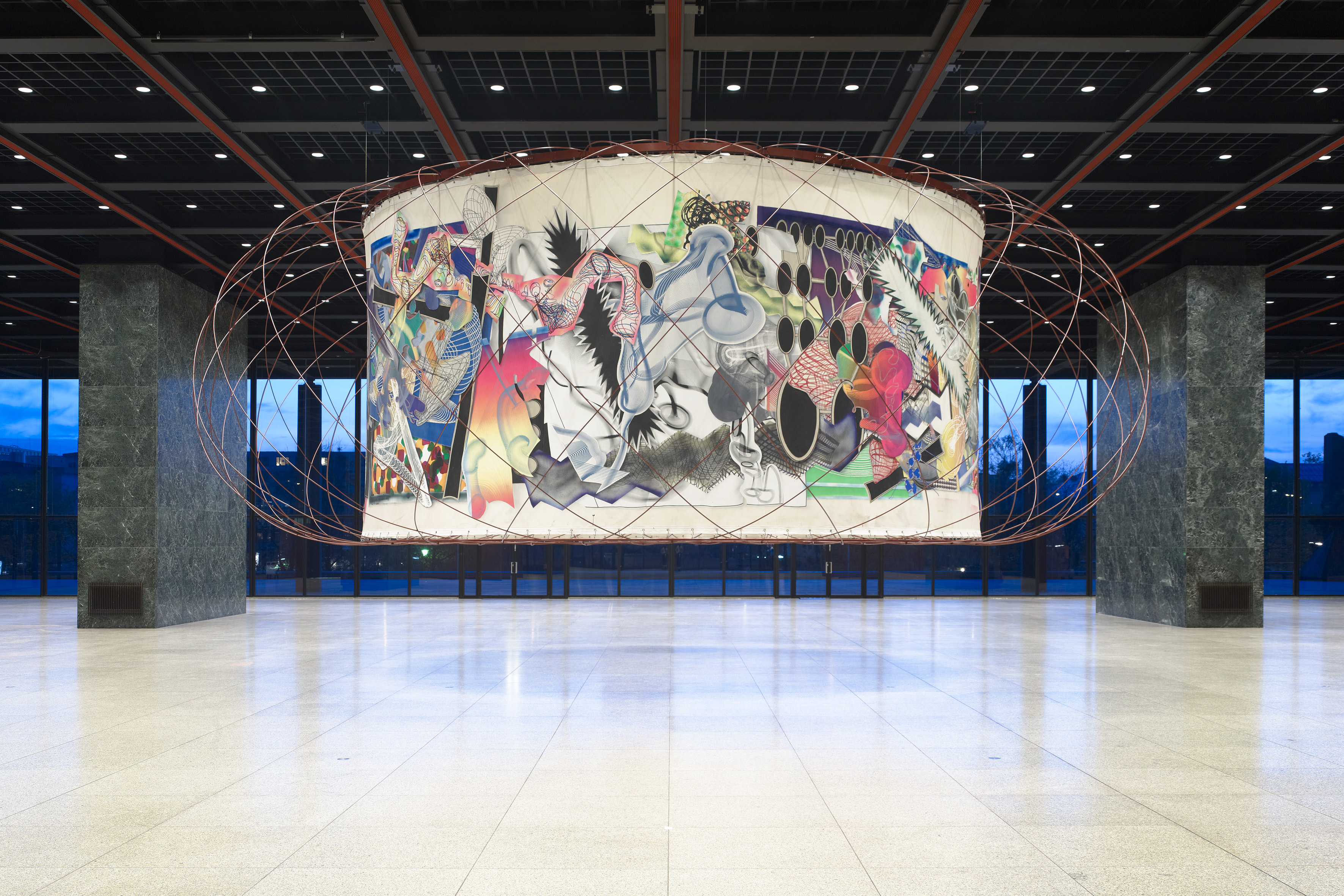They are both world stars: the American artist Frank Stella, who has been using painting as a medium to penetrate space since the 1960s, and the Spanish architect and engineer and builder Santiago Calatrava, who has created highly poetic spatial structures with filigree bridges and arched structures. For the first time, both artists have now created a joint work, which will be presented as a world premiere in the Neue Nationalgalerie: “The Michael Kohlhaas Curtain”.
At the center is a powerful, luminous monumental painting by Frank Stella from 2008, which the artist painted as a loose composition on a rough canvas. Stella, who has been closely connected to German culture since his studies, makes motifs based on Heinrich von Kleist and his story of “Michael Kohlhaas,” which is so richly told. Santiago Calatrava, in turn, designed a delicate architecture for the originally 30 meter long mural, a torus that turns the image into a ring-shaped panorama. Suspended at a lofty height above the visitors in the center of the glass hall, this installation becomes a complex spatial experience. Bright plastic colors, dynamic patterns and structures break through the rigid austerity of Mies van der Rohe. Art, literature and architecture combine to create an energetically radiating installation.
Frank Stella, born in Boston in 1936, studied art and history at Phillips University (Andover) and Princeton University (New Jersey) in the 1950s. He made his debut in the 1960s with black pictures, the “Black Paintings”. Monochrome, black color stripes ran parallel to the edge of the canvas, between which the canvas remained visible in narrow, unpainted areas. His goal was to stage a painting less as an image and more as a real, three-dimensional object. He emphasized this aspect of painting even more consistently in his so-called 'shaped canvases', in which he varied the usual rectangular shape of the canvas and used individual formats that followed the geometric structure within the picture. With “Sanbornville I” (1966), the National Gallery owns an important work from this period.
What is already apparent here is the spatial development that his paintings underwent in the 1970s. Stella moved on to designing surfaces as reliefs and providing them with quasi-architectural extensions. In the 80s he increasingly abandoned a flat painting surface. He worked out of the surface and into the surface: with eccentric, shrill-colored elements as well as with incisions in the picture support, he developed an almost sculptural formal language. Finally, in the 1990s, more and more large-scale sculptures left Stella's studio: expansive, brightly colored metal objects that, with their dynamic shapes, approached the science fiction genre.
